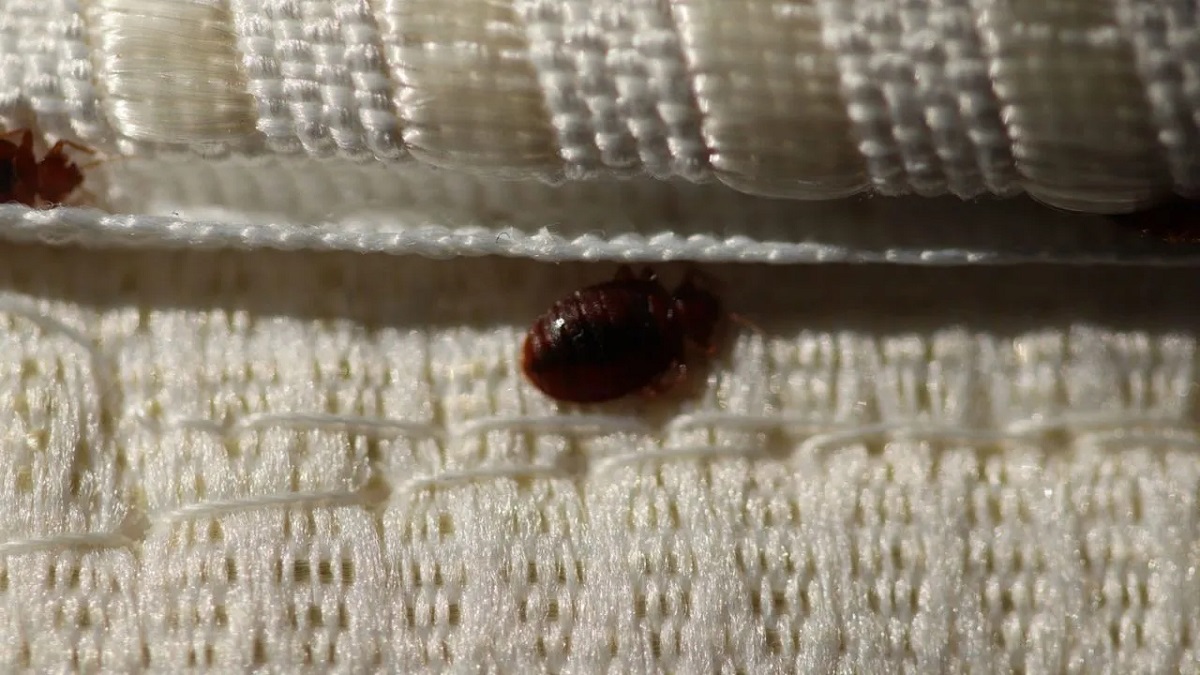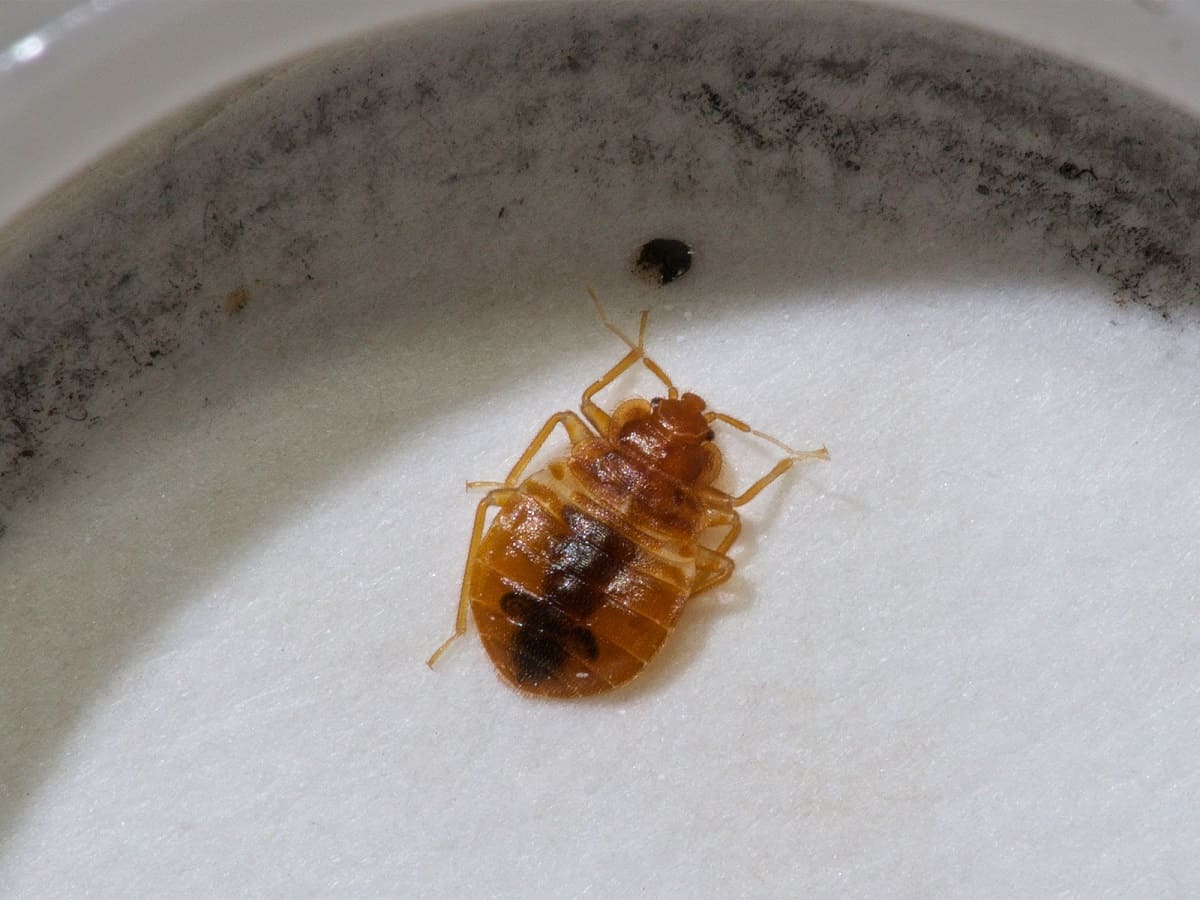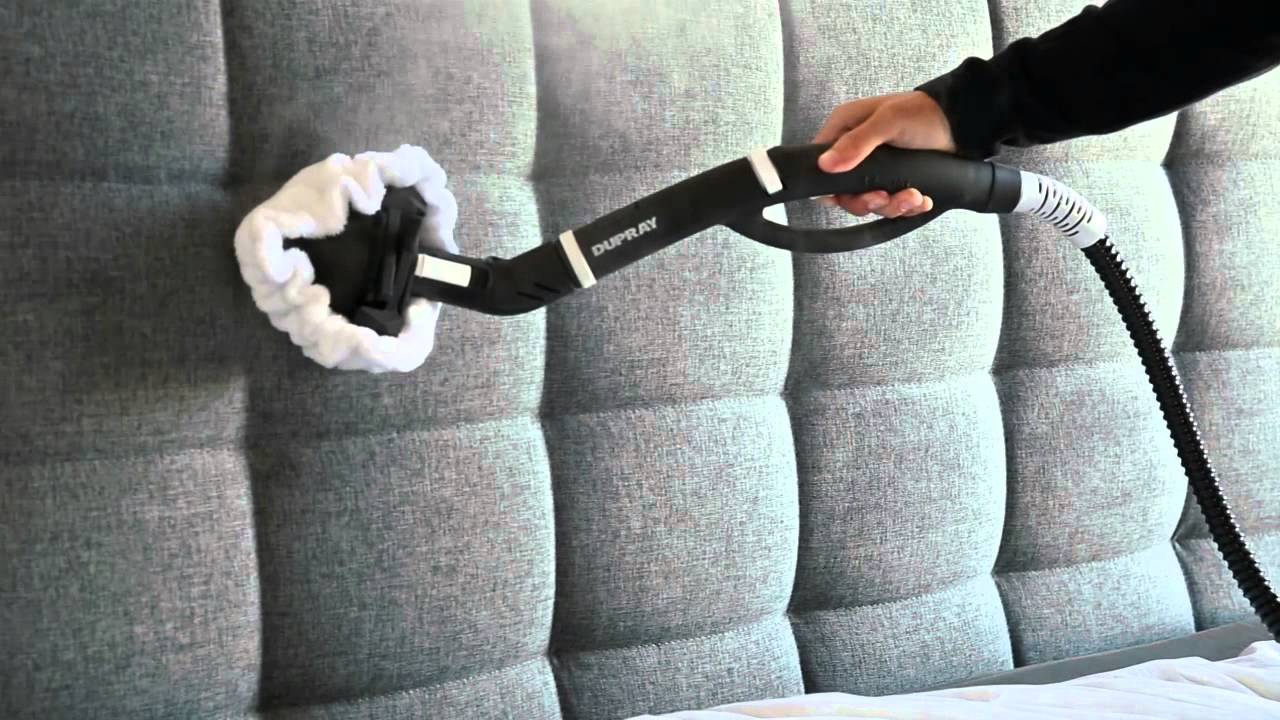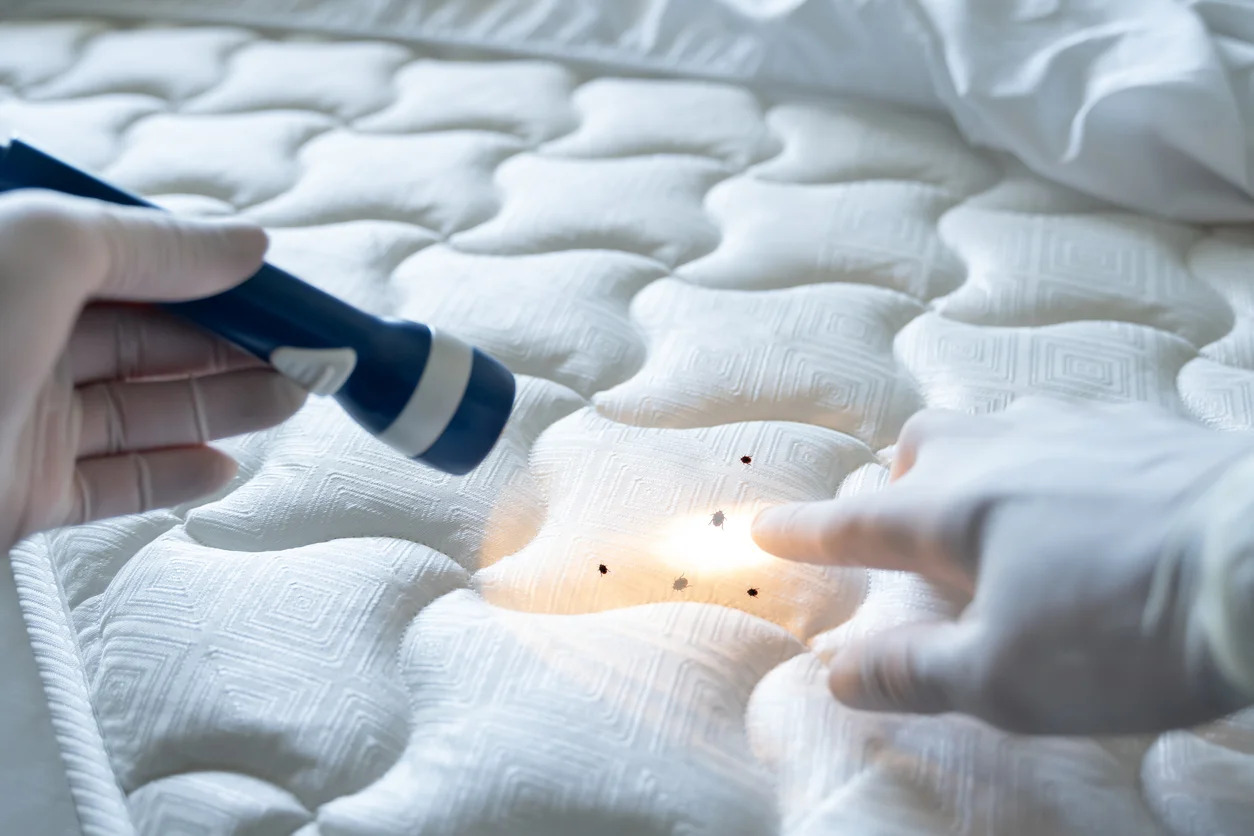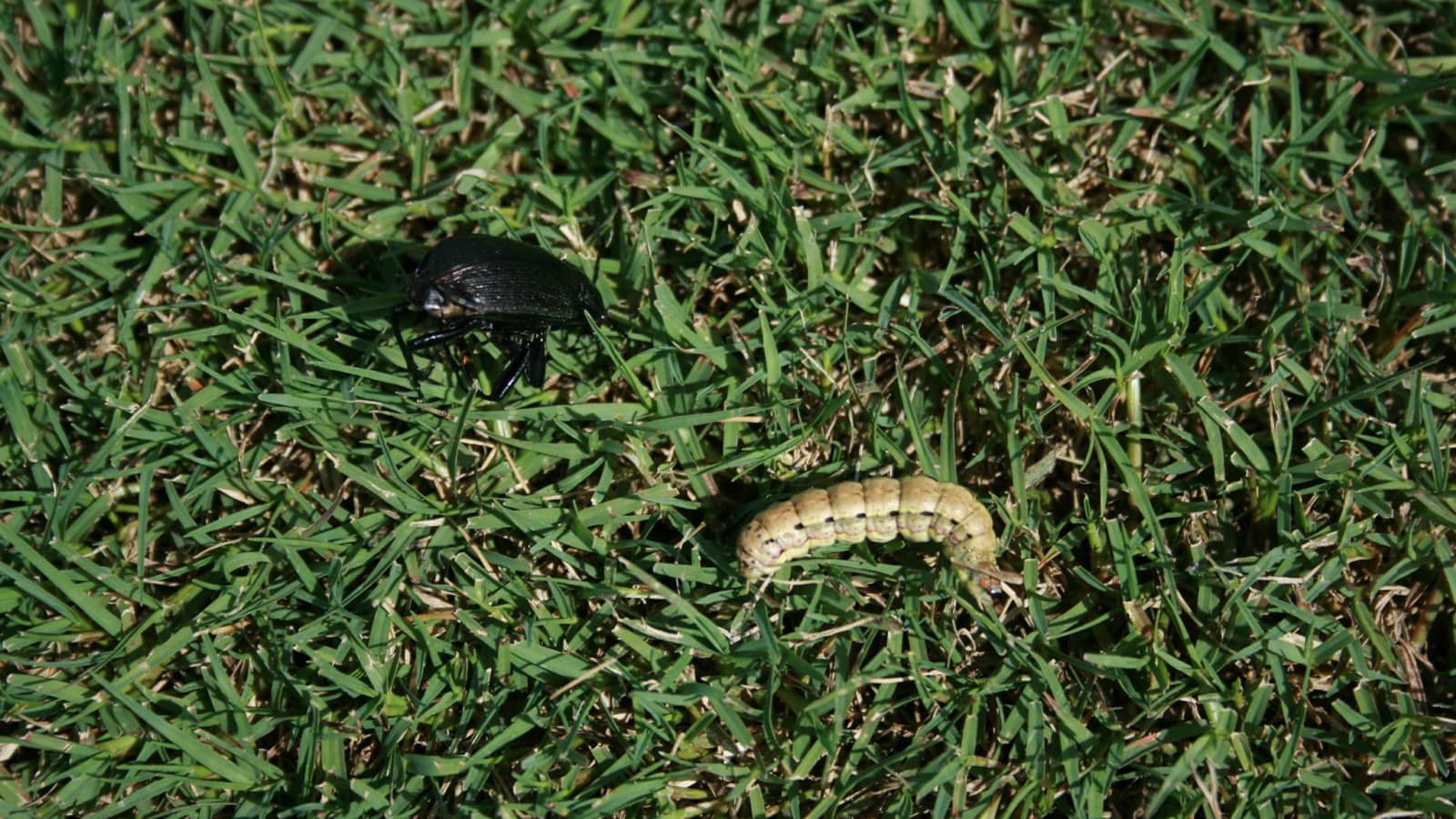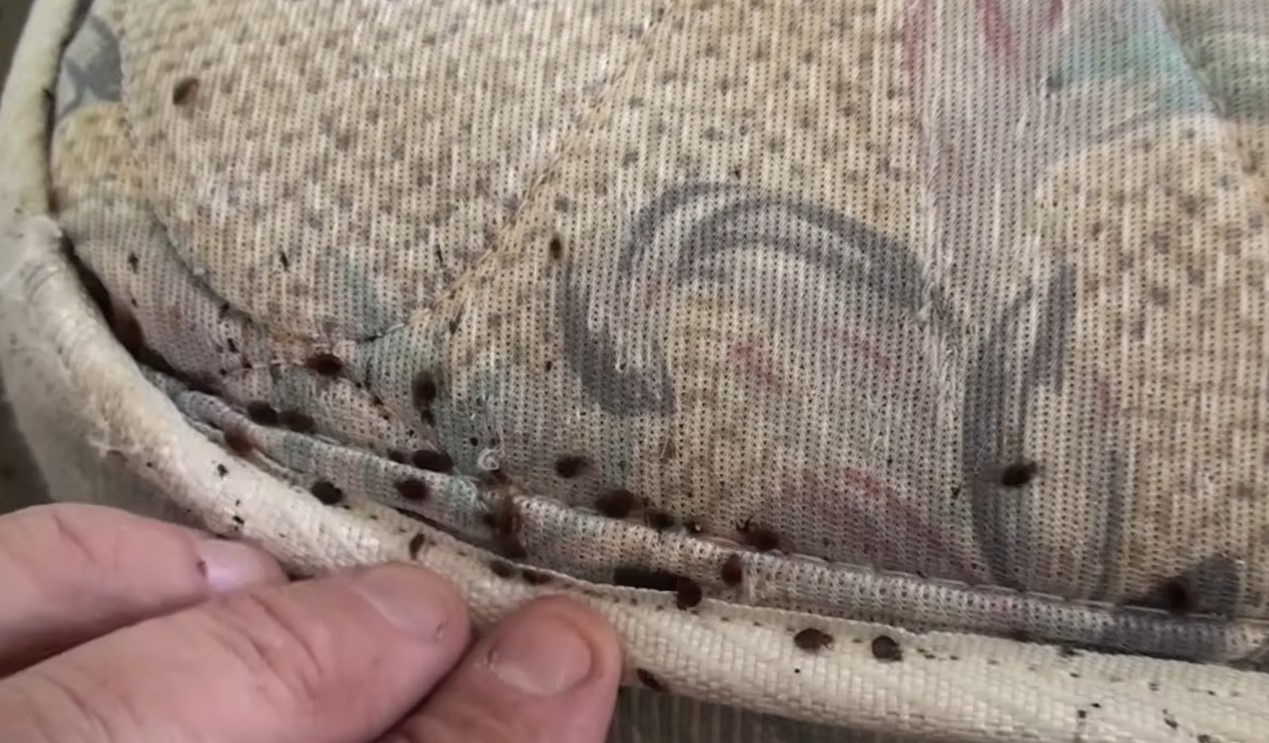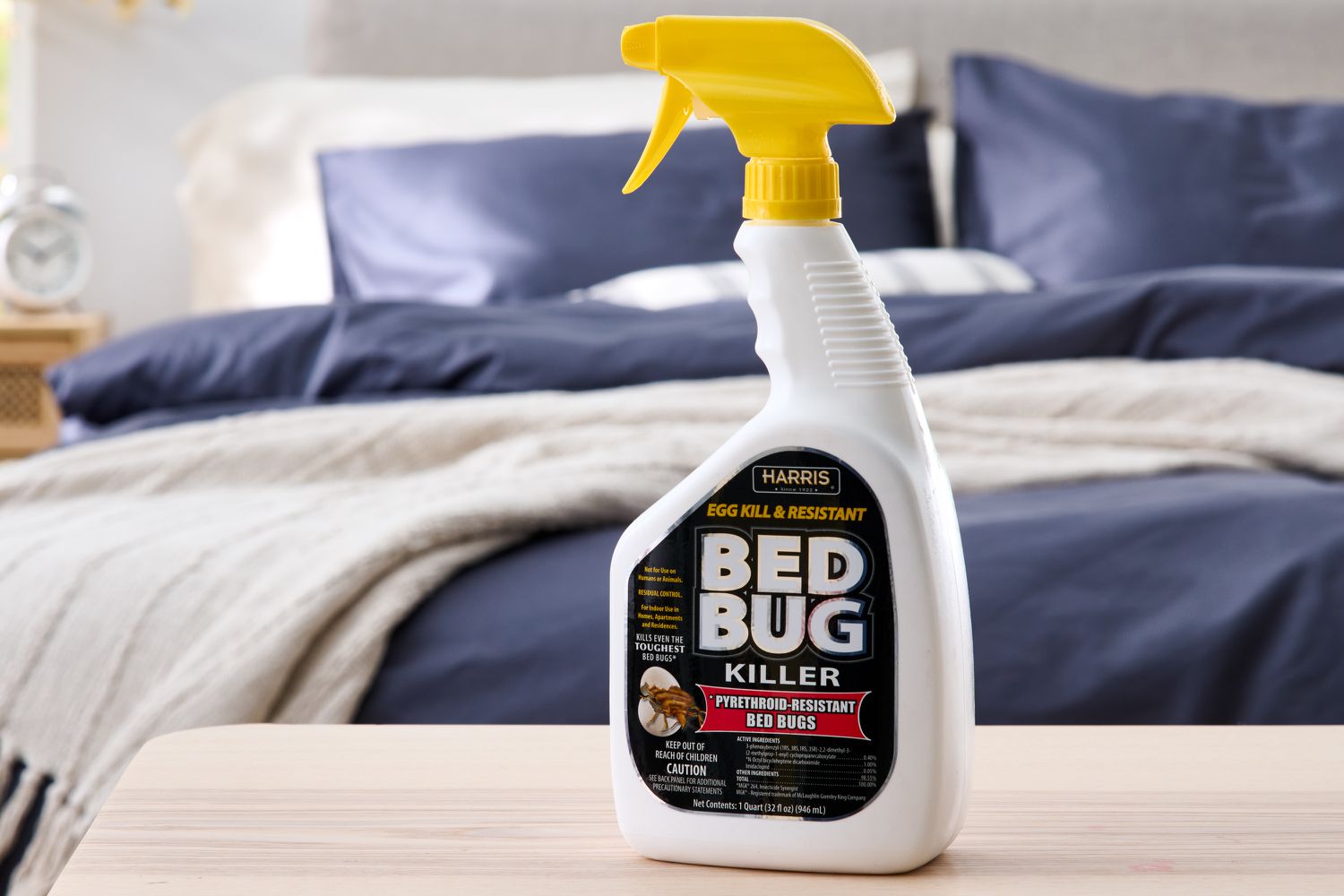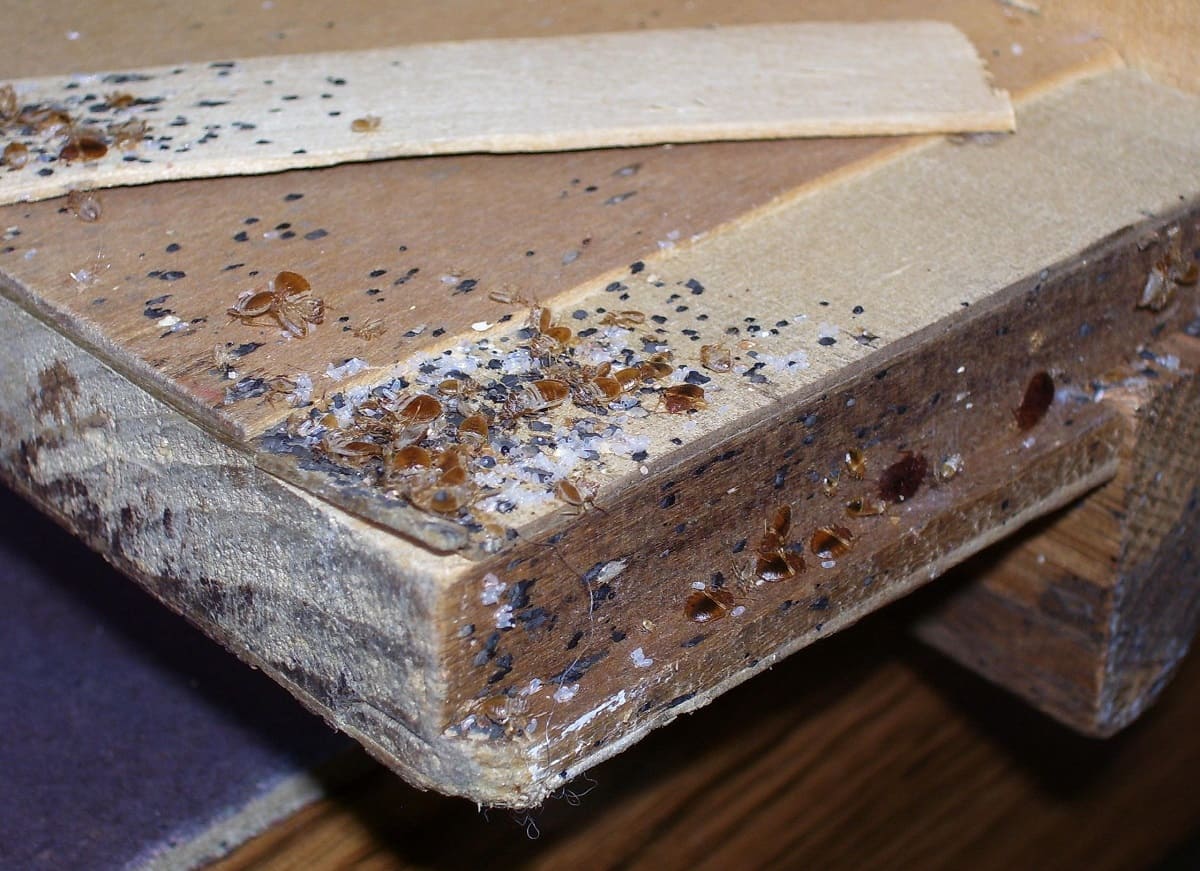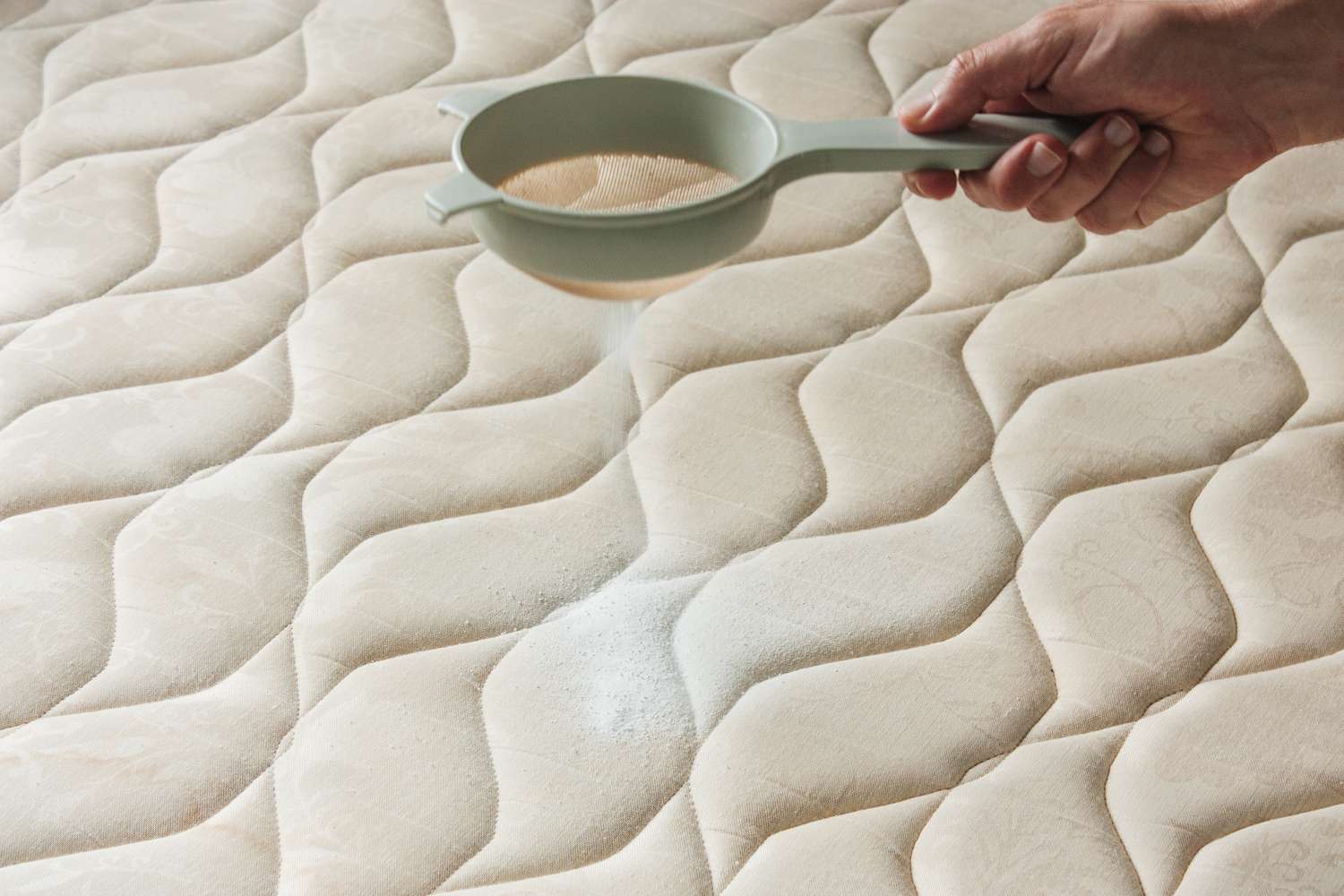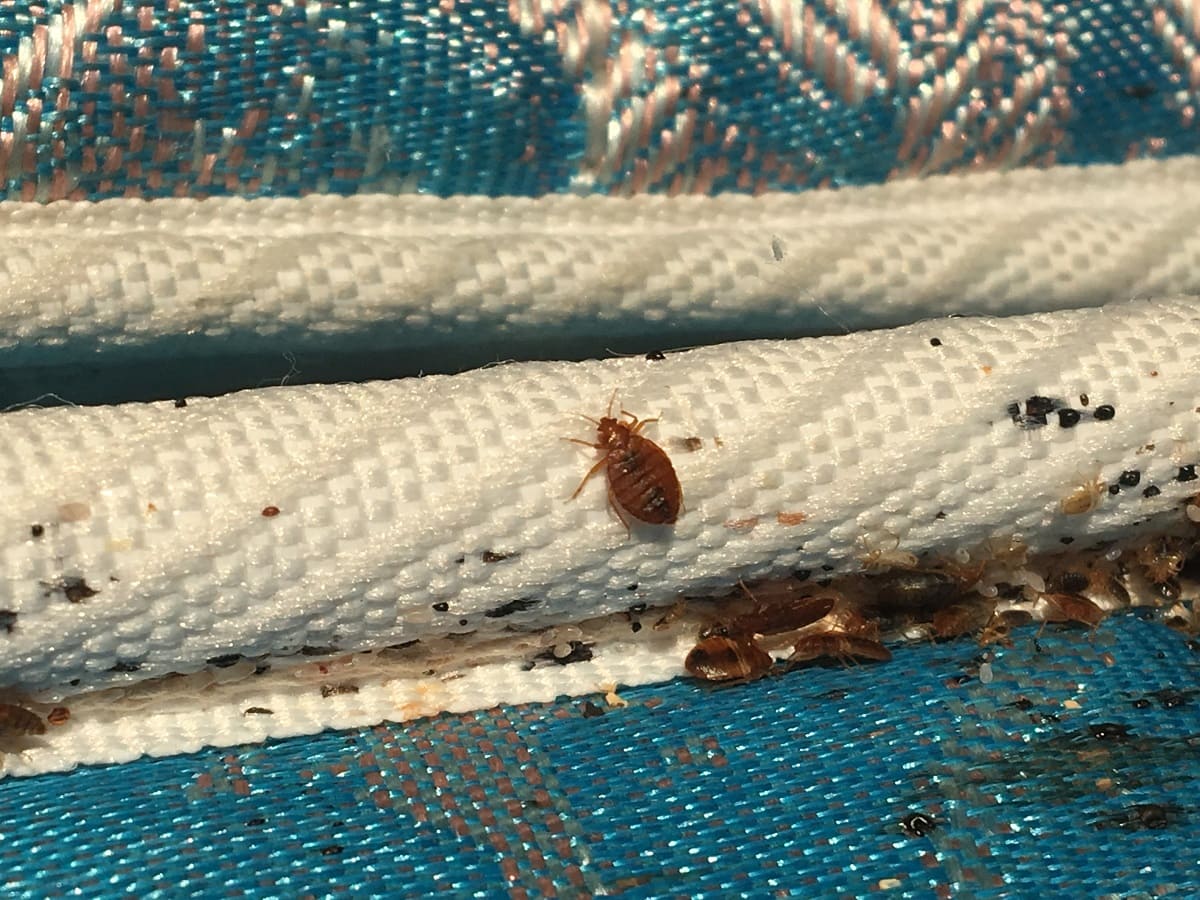Home>Furniture>Bedroom Furniture>What Temperature Kills Bed Bugs
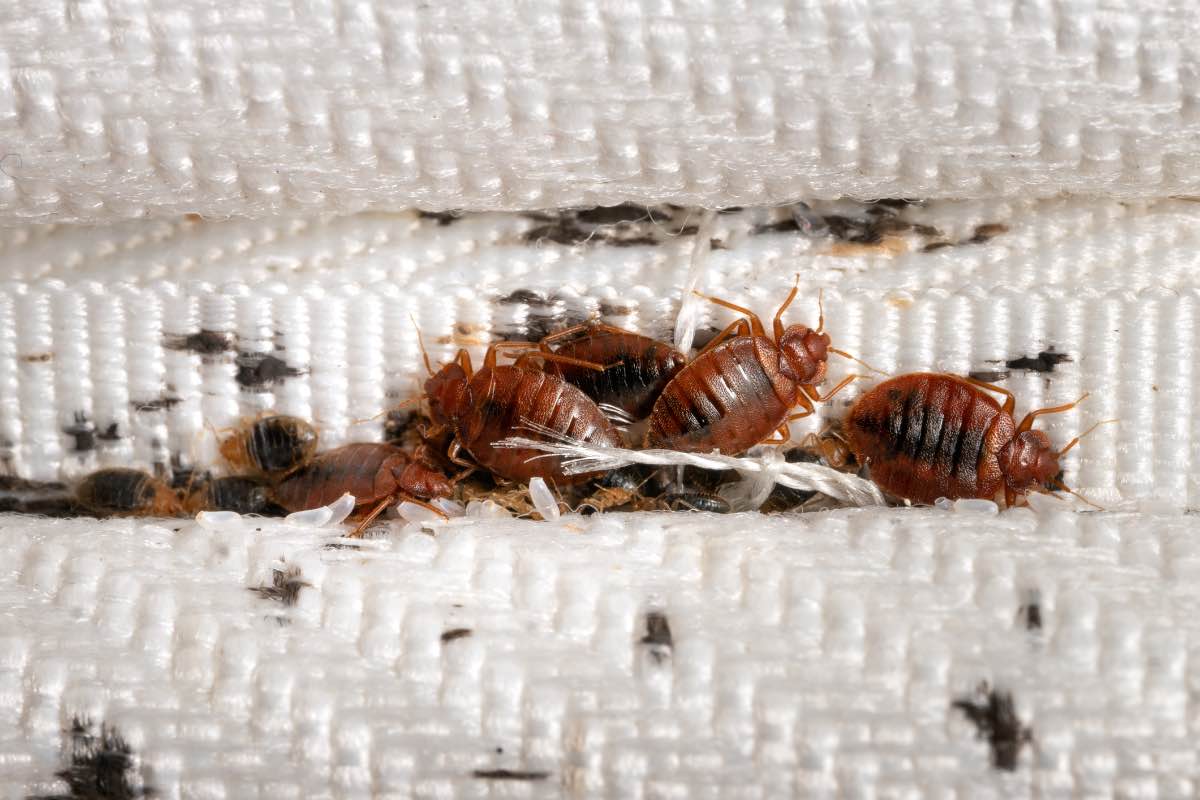

Bedroom Furniture
What Temperature Kills Bed Bugs
Modified: October 28, 2024
Protect your home from bed bugs with the right temperature. Discover how to eliminate these pests from your bedroom furniture effectively.
(Many of the links in this article redirect to a specific reviewed product. Your purchase of these products through affiliate links helps to generate commission for Storables.com, at no extra cost. Learn more)
Introduction
Welcome to the world of bedroom furniture and the ever-annoying presence of bed bugs. These pesky little creatures have been a thorn in the side of homeowners and hoteliers alike for centuries. Bed bugs are small, wingless insects that feed on the blood of humans and animals while they sleep. They are highly adaptable and can survive in a wide range of environments, making them a formidable foe.
One of the most important factors in combating bed bugs is understanding their behavior and vulnerabilities. One aspect that comes into play is the temperature. Bed bugs have specific temperature preferences that can affect their survival and breeding capabilities. By knowing the ideal temperature range for these pests, it becomes easier to develop effective strategies for their control and eradication.
In this article, we will explore the ideal temperature range for bed bug survival, the effects of extreme temperatures on these insects, and how temperature can be used as a method for bed bug treatment. We will also discuss the factors that can affect the effectiveness of temperature-based bed bug control.
So grab a comfy seat and join us on this journey into bed bug-infested territory. Together, we will unravel the mysteries of their temperature preferences and arm ourselves with the knowledge needed to banish these unwelcome guests from our bedrooms.
Key Takeaways:
- Extreme temperatures, both high and low, can effectively kill bed bugs. Heat treatment above 120°F and cold treatment below 0°F are non-toxic, rapid, and environmentally friendly methods for eradication.
- Factors like duration of exposure, hiding spots, and professional expertise impact the success of temperature-based bed bug control. Combining temperature treatments with other pest management techniques is crucial for long-lasting results.
Read more: What Kills Bed Bugs And Their Eggs
Understanding Bed Bugs
Before we delve into the temperature preferences of bed bugs, it’s important to have a basic understanding of these pests. Bed bugs are small, oval-shaped insects that belong to the Cimicidae family. They are reddish-brown in color and have a flat body, allowing them to easily hide in cracks and crevices.
Contrary to popular belief, bed bugs are not a sign of uncleanliness. They can infest the cleanest of homes, as their presence is usually brought in through infested furniture, luggage, or clothing. Once inside, they seek out warm-blooded hosts, primarily humans, to feed on. They are nocturnal creatures, preferring to come out at night to feed while their hosts sleep peacefully.
Bed bugs are excellent hitchhikers and can easily move from one location to another, making it a challenge to control their spread. They can live for several months without feeding, allowing them to survive even in vacant homes or hotel rooms. Their ability to reproduce rapidly further complicates the situation, as a single female bed bug can lay hundreds of eggs in her lifetime.
These resilient pests are incredibly skilled at hiding, often making it difficult to spot them with the naked eye. They commonly hide in mattress seams, bed frames, headboards, and other furniture near their human hosts. Their flat bodies enable them to squeeze into tiny spaces, making it crucial to thoroughly inspect and treat all potential hiding spots in a bed bug infestation.
Now that we have a clearer picture of bed bugs and their behavior, let’s explore the temperature conditions that affect their survival and how extremes of temperature can be used as a method for their control.
The Ideal Temperature Range for Bed Bug Survival
Bed bugs have specific temperature preferences that determine their survival and reproductive capabilities. They thrive in environments that provide warmth and humidity, similar to the conditions found in human dwellings. The ideal temperature range for bed bugs to survive and breed ranges between 70 and 90 degrees Fahrenheit (21 to 32 degrees Celsius).
At temperatures below 70 degrees Fahrenheit (21 degrees Celsius), bed bugs become less active and struggle to feed and reproduce. Their metabolism slows down, and they enter a state of hibernation-like dormancy. While they can still survive for extended periods at lower temperatures, their growth and reproduction rates decrease significantly.
On the other hand, temperatures above 90 degrees Fahrenheit (32 degrees Celsius) start to pose a threat to bed bugs. They become stressed and struggle to regulate their internal temperature. Prolonged exposure to high temperatures can lead to dehydration, ultimately causing their demise.
It is important to note that these temperature preferences are not set in stone, and bed bugs can still survive outside of this range. However, temperatures outside the ideal range make it more challenging for them to thrive and reproduce, which is crucial for effective bed bug control.
Knowing the ideal temperature range for bed bugs opens up opportunities to use temperature-based methods to combat infestations. By manipulating the surrounding temperature, we can disrupt their lifecycle and reduce their population, making it easier to eliminate these pests from our homes.
Now that we understand the temperature preferences of bed bugs, let’s explore how extreme temperatures can be utilized as a method for bed bug treatment.
Extreme Temperatures and Their Impact on Bed Bugs
Extreme temperatures, both high and low, can have a significant impact on the survival and control of bed bug infestations. Let’s explore how these temperature extremes affect these pesky insects.
High Temperatures: Bed bugs are highly sensitive to high temperatures. Exposing them to temperatures above 120 degrees Fahrenheit (49 degrees Celsius) can be lethal. This is because the heat impairs their cellular functions, dehydrates them, and ultimately causes their death. Heat treatment for bed bugs involves using specialized equipment to raise the temperature of the infested area, effectively killing bed bugs at all stages of their lifecycle. Heat treatment is a non-toxic and eco-friendly method that eliminates the need for chemical pesticides.
Low Temperatures: Just as bed bugs struggle with high temperatures, they also have a hard time surviving in extremely cold conditions. Exposing them to temperatures below 0 degrees Fahrenheit (-18 degrees Celsius) can be fatal. Cold treatment for bed bugs involves using techniques such as freezing or using liquid carbon dioxide to lower the temperature in infested areas. Cold treatment is also a non-toxic approach that effectively kills bed bugs.
Extreme temperatures can penetrate the various hiding spots of bed bugs, ensuring that even the hard-to-reach areas are affected. Additionally, bed bugs exposed to extreme temperatures are less likely to develop resistance compared to chemical pesticides, making temperature-based treatments a reliable option for control.
While extreme temperatures can be effective in eradicating bed bug infestations, it is essential to understand that using temperature alone may not be sufficient for complete control. Factors such as the duration and consistency of temperature exposure, the size of the infested area, and the presence of hidden or insulated spots can impact the effectiveness of temperature-based treatments.
Now that we understand the impact of extreme temperatures on bed bugs, let’s explore how high and low temperatures can be used as effective methods for bed bug treatment.
Tip: Bed bugs are killed at temperatures of 120°F or higher. Use a steamer or a hot dryer to effectively eliminate bed bugs from infested items.
High Temperatures as a Bed Bug Treatment Method
High-temperature treatment, also known as heat treatment, is a powerful and effective method for eliminating bed bug infestations. It involves exposing the infested area to temperatures above 120 degrees Fahrenheit (49 degrees Celsius) for a sustained period of time.
The heat treatment process typically involves the use of specialized equipment, such as industrial heaters and fans, to raise the temperature throughout the infested space. The goal is to heat the area evenly and maintain the high temperature for several hours. This ensures that all stages of the bed bugs’ lifecycle, including eggs, nymphs, and adults, are effectively exterminated.
There are several advantages to using high temperatures as a bed bug treatment method:
- Efficacy: Heat treatment is highly effective in killing bed bugs. The high temperatures disrupt their cellular functions and metabolic processes, causing dehydration and ultimately leading to their demise. It can reach even the most hard-to-reach hiding spots, ensuring thorough eradication of the infestation.
- Rapid Results: Heat treatment can provide rapid results, often eliminating bed bug infestations in just one treatment session. This is particularly beneficial in commercial settings, such as hotels, where quick turnaround times are essential.
- Non-Toxic: Heat treatment is a non-toxic method of bed bug control. Unlike chemical pesticides, it does not leave behind harmful residues or pose health risks to humans or pets. This makes it a safer option for those concerned about the use of chemicals in their living environment.
- Environmentally Friendly: Heat treatment is also an environmentally friendly option. It does not contribute to air or water pollution, making it a sustainable choice for bed bug eradication.
It’s important to note that heat treatment requires professional expertise and specialized equipment to be effective. Professional pest control companies experienced in heat treatment can ensure that the entire infested area reaches the appropriate temperature and that the treatment is conducted safely.
While heat treatment is highly effective, it may not be suitable for all situations. Some items, such as certain electronics or heat-sensitive materials, may be damaged by high temperatures. In such cases, alternative treatment methods may need to be considered.
Now that we understand the benefits of using high temperatures as a bed bug treatment method, let’s explore how low temperatures can also be utilized in bed bug control.
Read more: What Chemicals Kill Bed Bugs
Low Temperatures as a Bed Bug Treatment Method
Low-temperature treatment, also known as cold treatment or freezing, is another effective method for eliminating bed bug infestations. This method involves exposing the infested area to temperatures below 0 degrees Fahrenheit (-18 degrees Celsius) for an extended period.
Cold treatment can be achieved through various techniques, including freezing with specialized equipment or using liquid carbon dioxide (CO2) to lower the temperature in the infested space. It is important to ensure that the temperature remains consistently below the freezing point for several hours to effectively kill all stages of the bed bugs’ lifecycle.
There are several advantages to using low temperatures as a bed bug treatment method:
- Effectiveness: Bed bugs are highly sensitive to extreme cold temperatures. Exposure to freezing temperatures disrupts their cellular processes and causes their bodily fluids to freeze, leading to their demise. Cold treatment can effectively kill bed bugs at all stages of their lifecycle, including eggs.
- No Chemicals: Cold treatment does not involve the use of chemical pesticides. This is particularly beneficial for individuals who prefer non-toxic methods or have concerns about the potential health risks associated with chemical treatments.
- Environmentally Friendly: Cold treatment is an environmentally friendly option as it does not introduce harmful chemicals into the environment.
- Minimal Prep Work: Unlike other bed bug treatment methods, such as chemical sprays or steam treatments, cold treatment requires minimal preparation. There is no need to remove belongings or vacate the property during treatment, making it a convenient option for homeowners and commercial establishments.
It is important to note that cold treatment may not be as rapid as heat treatment. While heat can penetrate deep into furniture and other belongings, cold treatment may require more time to ensure that all areas are sufficiently exposed to low temperatures. Multiple treatment sessions may be necessary to achieve complete eradication.
Professional assistance is recommended for cold treatments to ensure that the appropriate temperatures are reached and maintained consistently throughout the infested space. Pest control professionals with experience in cold treatments can provide the necessary expertise to effectively eliminate bed bugs using this method.
Now that we understand the benefits of using low temperatures as a bed bug treatment method, let’s explore the factors that can affect the effectiveness of temperature-based bed bug control.
Factors That Affect the Effectiveness of Temperature-Based Bed Bug Control
While temperature-based methods like heat and cold treatments can be highly effective in eliminating bed bug infestations, several factors can influence their overall success. Understanding these factors is crucial for maximizing the effectiveness of temperature-based bed bug control methods.
Duration and Consistency of Temperature Exposure: The duration and consistency of temperature exposure are critical factors in temperature-based treatments. Bed bugs require sustained exposure to extreme temperatures to ensure their complete elimination. Short exposure or fluctuations in temperature may allow some bed bugs to survive or to re-infest the area. It is essential to follow professional guidelines and ensure that the infested space remains at the appropriate temperature for the recommended duration.
Insulation and Hiding Spots: Bed bugs are skilled at finding hiding spots and can retreat to insulated areas during temperature-based treatments. They may seek refuge in cracks, crevices, wall voids, or within furniture, making it challenging to reach them with heat or cold. It is crucial to conduct a thorough inspection and treatment to identify and target these hiding spots to ensure successful eradication.
Room Size and Layout: The size and layout of the infested area can impact the effectiveness of temperature-based treatments. Large rooms or areas with multiple rooms may require additional equipment or treatment sessions to ensure that the entire space reaches the necessary temperature. It’s important to consider the layout and ensure proper distribution of heat or cold throughout the entire area for comprehensive treatment.
Presence of Heat-Sensitive Items: Some items, such as certain electronics, artwork, or delicate fabrics, may be susceptible to damage from high temperatures. It is crucial to evaluate the items in the infested area and take appropriate measures to protect heat-sensitive belongings. Alternatively, cold treatment may be a better option in such cases.
Professional Expertise: Temperature-based treatments can be complex and require specialized equipment and knowledge. Professional pest control companies experienced in heat or cold treatments have the expertise to ensure that the treatment is conducted safely and effectively. Their knowledge and experience can significantly increase the chances of successful bed bug eradication.
Considering these factors and working with a professional pest control company can help optimize the effectiveness of temperature-based bed bug control methods. Professional experts can assess the unique circumstances of each infestation and tailor treatment strategies accordingly.
Temperature-based treatments, when implemented correctly and with the necessary considerations, can be highly effective in eliminating bed bug infestations. However, it’s important to note that these methods may be most effective when used in combination with other integrated pest management techniques to achieve thorough and long-lasting results.
Now that we have explored the factors that impact the effectiveness of temperature-based bed bug control, let’s conclude our journey into the world of bed bugs and temperature.
Conclusion
Bed bugs are persistent pests that can disrupt our sleep and cause significant distress. Understanding their temperature preferences and vulnerabilities is key to effective bed bug control. By knowing the ideal temperature range for their survival and reproductive capabilities, we can leverage extreme temperatures as powerful methods for treatment.
High temperatures, above 120 degrees Fahrenheit (49 degrees Celsius), and low temperatures, below 0 degrees Fahrenheit (-18 degrees Celsius), can be utilized to kill bed bugs at all stages of their lifecycle. Heat treatment and cold treatment are non-toxic and environmentally friendly options that can provide rapid results with minimal preparation. These temperature-based methods offer several advantages, including efficacy, non-toxicity, and minimal impact on the environment.
However, it is important to consider factors that can affect the effectiveness of temperature-based bed bug control. Duration and consistency of temperature exposure, insulation and hiding spots, room size and layout, presence of heat-sensitive items, and professional expertise all play a role in achieving successful eradication.
To ensure optimal results, it is advisable to consult with professional pest control companies experienced in temperature-based treatments. Their knowledge and expertise can help navigate the challenges posed by bed bug infestations and tailor treatment strategies to individual circumstances.
Finally, it’s important to note that temperature-based treatments may be most effective when combined with other integrated pest management techniques. Thorough inspection, proper sanitation, and proactive prevention measures are crucial in preventing future infestations and maintaining a bed bug-free environment.
Now armed with knowledge about the ideal temperature range for bed bug survival and the impact of extreme temperatures, you can take the necessary steps to combat and eliminate these pesky pests from your bedroom and beyond. Remember, while bed bugs may be resilient, with the right approach and professional assistance, you can restore peace and tranquility to your sleep environment.
Frequently Asked Questions about What Temperature Kills Bed Bugs
Was this page helpful?
At Storables.com, we guarantee accurate and reliable information. Our content, validated by Expert Board Contributors, is crafted following stringent Editorial Policies. We're committed to providing you with well-researched, expert-backed insights for all your informational needs.
